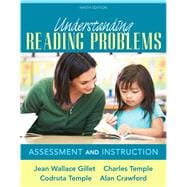This title is only available as a loose-leaf version with Pearson eText.
The market-leading, dependable guide for assessing literacy at every stage of development and implementing corrective instruction.
In this widely popular book, classroom teachers get up-to-date coverage of reading processes, their assessment, and their corrective instruction, including thorough treatment of reading and writing at every stage of development. The new edition provides updated coverage of the Common Core State Standards and the imperative to teach English learners. Included are an overview of essential reading processes—acquiring emergent literacy concepts, word recognition, fluency, vocabulary, and comprehension, as well as spelling and writing—and a review of the stages of literacy development—emergent, beginning reading, building fluency, reading to learn and for pleasure, and mature reading. Thorough explanations and detailed procedures for assessing and teaching emergent literacy look at phonological awareness, phonics and word knowledge from beginning to advanced levels, vocabulary, fluency, and comprehension of narrative and informational text. Teaching techniques range from the Response to Intervention framework to strategies for individual students, including those whose home language is not English. Diagnostic and week-to-week monitoring procedures, as well as formal assessments and testing terminology are covered in detail, and a full chapter covers laws and policies affecting children with special needs, as well as other physical and cognitive factors that impinge on students’ literacy growth.
013384661X / 9780133846614 Understanding Reading Problems: Assessment and Instruction, Pearson eText with Loose-Leaf Version -- Access Card Package
Package consists of:
- 0134228448 / 9780134228440 Understanding Reading Problems: Assessment and Instruction, Loose-Leaf Version
- 0134276981 / 9780134276984 Understanding Reading Problems: Assessment and Instruction, Pearson eText -- Access Card








